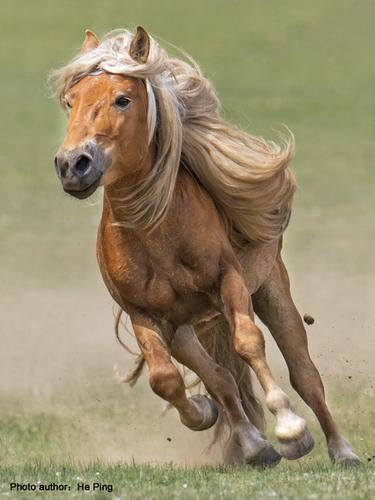当前位置:
X-MOL 学术
›
Microbiologyopen
›
论文详情
Our official English website, www.x-mol.net, welcomes your
feedback! (Note: you will need to create a separate account there.)
Characterization and comparison of the bacterial microbiota in different gastrointestinal tract compartments of Mongolian horses.
MicrobiologyOpen ( IF 3.9 ) Pub Date : 2020-03-09 , DOI: 10.1002/mbo3.1020 Shaofeng Su 1, 2 , Yiping Zhao 1 , Zongzheng Liu 3 , Guiqin Liu 1, 4 , Ming Du 1 , Jing Wu 1 , Dongyi Bai 1 , Bei Li 1 , Gerelchimeg Bou 1 , Xinzhuang Zhang 1 , Manglai Dugarjaviin 1
MicrobiologyOpen ( IF 3.9 ) Pub Date : 2020-03-09 , DOI: 10.1002/mbo3.1020 Shaofeng Su 1, 2 , Yiping Zhao 1 , Zongzheng Liu 3 , Guiqin Liu 1, 4 , Ming Du 1 , Jing Wu 1 , Dongyi Bai 1 , Bei Li 1 , Gerelchimeg Bou 1 , Xinzhuang Zhang 1 , Manglai Dugarjaviin 1
Affiliation

|
The intestinal microbiota plays an important role in the health and metabolism of the host. Next‐generation sequencing technology has enabled the characterization of the gut microbiota of several animal species. We analyzed the intestinal microbiota in six different parts of the gastrointestinal tracts (GITs) of five Mongolian horses by sequencing the 16S rRNA gene V3‐V4 hypervariable region. All horses were kept in the natural habitat of the Inner Mongolia grassland. Significant differences were observed among the microbiota compositions of the distinct GIT regions. In addition, while the microbial community structures of the small and large intestine were significantly different, those of the cecum and colon were similar. In the foregut, Firmicutes (65%) and Proteobacteria (23%) were the most abundant, while Firmicutes (45%) and Bacteroidetes (42%) were the most common in the hindgut. At the level of family, Ruminococcaceae (p = .203), Lachnospiraceae (p = .157), Rikenellaceae (p = .122), and Prevotellaceae (p = .068) were predominant in the hindgut, while the relative abundance of the Akkermansia genus (5.7%, p = .039) was higher in the ventral colon. In terms of the putative functions, the ratio of microbial abundance in the different parts of the GIT was similar, the result can help characterize the gut microbial structure of different animals.
中文翻译:

蒙古马不同胃肠道区室中细菌菌群的表征和比较。
肠道菌群在宿主的健康和代谢中起着重要作用。下一代测序技术已经能够表征几种动物的肠道菌群。我们通过对16S rRNA基因V3-V4高变区进行测序,分析了五只蒙古马在胃肠道(GIT)六个不同部位的肠道菌群。所有的马匹都饲养在内蒙古草原的自然栖息地中。在不同的GIT区域的微生物群组成之间观察到显着差异。另外,尽管小肠和大肠的微生物群落结构显着不同,但盲肠和结肠的微生物群落结构却相似。在前肠中,Firmicutes(65%)和Proteobacteria(23%)最丰富,后肢中最常见的是硬毛虫(45%)和拟杆菌属(42%)。在家庭层面,Ruminococcaceae(p = .203),后鞭毛科(p = .157),Rikenellaceae(p = .122)和 Pretelltellaceae (p = .068)在后肠中占主导地位,而Akkermansia属的相对丰度(5.7%,p = .039)在腹侧结肠中较高。就假定的功能而言,胃肠道不同部位的微生物丰度比是相似的,其结果有助于表征不同动物的肠道微生物结构。
更新日期:2020-03-09
中文翻译:

蒙古马不同胃肠道区室中细菌菌群的表征和比较。
肠道菌群在宿主的健康和代谢中起着重要作用。下一代测序技术已经能够表征几种动物的肠道菌群。我们通过对16S rRNA基因V3-V4高变区进行测序,分析了五只蒙古马在胃肠道(GIT)六个不同部位的肠道菌群。所有的马匹都饲养在内蒙古草原的自然栖息地中。在不同的GIT区域的微生物群组成之间观察到显着差异。另外,尽管小肠和大肠的微生物群落结构显着不同,但盲肠和结肠的微生物群落结构却相似。在前肠中,Firmicutes(65%)和Proteobacteria(23%)最丰富,后肢中最常见的是硬毛虫(45%)和拟杆菌属(42%)。在家庭层面,Ruminococcaceae(p = .203),后鞭毛科(p = .157),Rikenellaceae(p = .122)和 Pretelltellaceae (p = .068)在后肠中占主导地位,而Akkermansia属的相对丰度(5.7%,p = .039)在腹侧结肠中较高。就假定的功能而言,胃肠道不同部位的微生物丰度比是相似的,其结果有助于表征不同动物的肠道微生物结构。











































 京公网安备 11010802027423号
京公网安备 11010802027423号